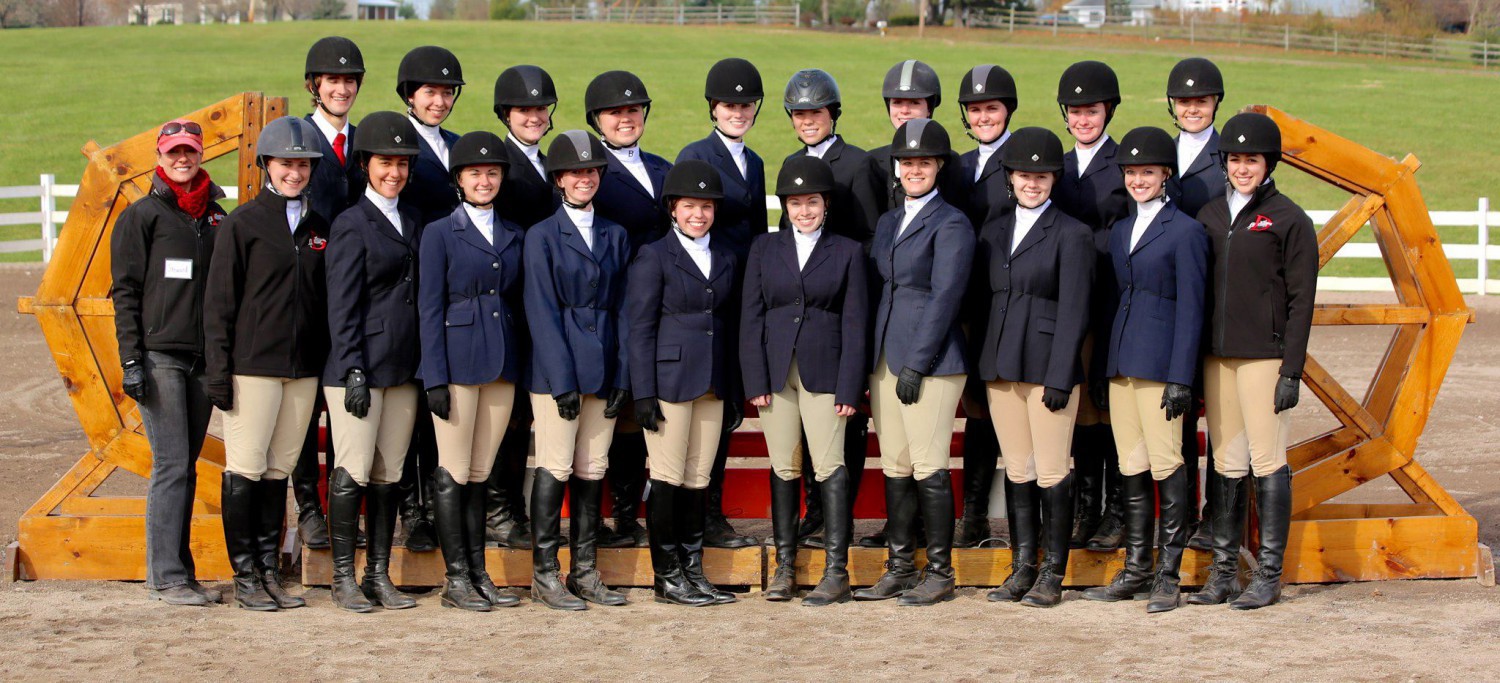So, now that you kind of have a general idea of how these shows work (I hope), let’s take an in-depth look at one concept that is relevant at all collegiate shows—the horse draw. The horse draw can either be your best friend or your worst enemy. Here’s why.
A lot of people don’t realize that the horses we ride at these IHSA shows are chosen completely randomly. Usually (unless you’ve “drawn” them at another show), we have never even sat on these horses—no previous experience, nothing. And the best part is, once you’re on the horse, you don’t get to warm up. You walk straight into the ring for the judge to see and pray with all your heart that you’re not riding a demon horse (just kidding—kind of).
These random choices are determined by what we call the horse draw. At every show, there is a program. The program lists every class with all the riders in that class. Next to each rider’s name is a number (usually 1-7, depending on the number of competitors in each class). The horses provided by each school are also numbered, so as you can guess, the riders’ numbers match up with those of the horses, and voila—you have now found your partner in crime.
So, as you can see, the horse draw provides a little bit of a challenge. The purpose of the horse draw is to make it as fair as possible for all the riders that are competing. The fact that we have never ridden these horses tests our ability as riders to be flexible and respond to all types of situations.
The catch: some horses are nicer than others. They look nicer, move nicer, and overall make your job as a rider a little bit easier. These are the ones we want to draw, but this doesn’t always happen. If you get a not-so-nice draw, your only option is to make the most of the situation. We’ve all been there—riding horses that buck, horses that kick, horses that speed, horses that are too slow, and worst of all horses that don’t move when they manure. All we can do is do our best and laugh about it later. Who knows, we might even be pleasantly surprised with a win.
Sometimes the horse draw can be discouraging, but I find it to be kind of fun and very worthwhile. It makes the show a challenge—almost like you’re proving something to yourself. When you do well on a “not-so-nice” draw, you basically know you rocked it, and it’s a great feeling. When you don’t do so well, you just shake it off and push yourself to do better next time. These shows are a learning experience and the horse-draw contributes to that. It provides the opportunity to learn how to ride all types of horses, and this is what makes us more successful riders.


This is fascinating. Can multiple riders have the same horse or is there one horse for every rider? It’s very impressive that every rider can adapt easily to this—horses are animals obviously so they are unpredictable. I’m sure it takes a lot of practice to master what to do when a horse that you have never ridden before does something unusual. Goes to show how skilled and poised horseback riders are.
LikeLike
This post reminded me of the “Luck of the Irish.” Clearly the horse draw can either really benefit, or hurt you. I would have never guessed that during shows riders were not able to choose their horse; however, it does seem to be the most “fair” way to assign horses to riders. Hopefully you can avoid the “not-so-nice” horses as much as possible!
LikeLike
Honestly, I had no idea how horse riding competitions worked before reading your blog, but I am so intrigued. I was always curious as to whether or not you each had your own horse, but I can’t believe that the horses you ride are chosen randomly! That seems to add a whole new level of anxiety to competing! In terms of this post specifically, I really like your tone in your writing; it’s very friendly and approachable, and it makes me happy to read it. I enjoyed this post, and I will definitely check out your other posts.
LikeLike
Before reading your blog, I had little to no idea about how equestrian competitions worked. I think it’s impressive how understanding and accepting of the ‘Horse Draw’ you are, because I would probably be freaking out. I really liked this post because you explained the system very clearly while offering some of your own insight into the process. Your posts have a relaxed tone without being too casual which fits the topic of your blog well.
LikeLike